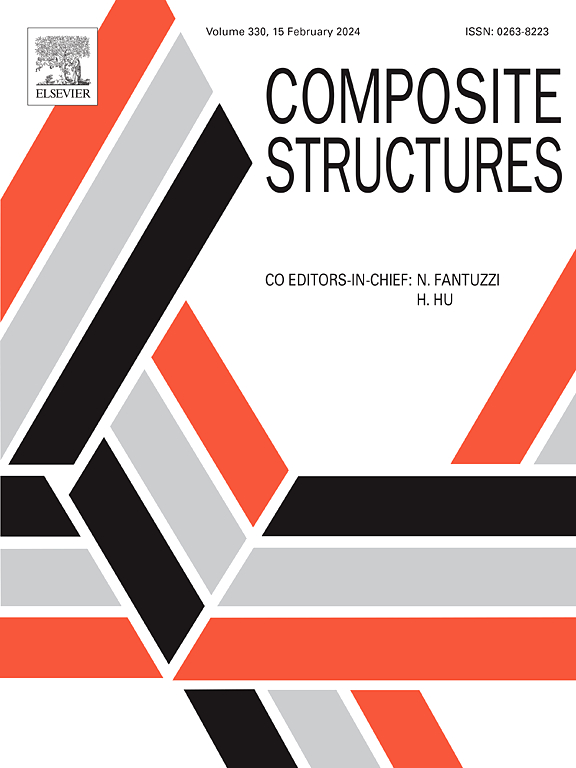Tomographic modeling and internal structure analysis of engineering textiles: A parametric approach
IF 6.3
2区 材料科学
Q1 MATERIALS SCIENCE, COMPOSITES
引用次数: 0
Abstract
Tomographic modeling of textiles is attractive for numerical investigation of composites due to its ability to reveal the internal architecture. However, reliability is notably dependent on geometrical modeling accuracy, which is still challenging. This paper addresses existing issues using a parametric approach that relies on statistical resampling and spatial autocorrelated prediction. The proposed strategy involves three stages: first, an explicit representation of each fiber tow is derived from the segmented images through statistical resampling in the parametric domain, which is subsequently mapped back to the physical domain according to known spatial autocorrelation. It allows depicting tow surfaces with varying levels of detail. Second, the tow trajectory is parameterized and subjected to a smoothing process, thereby identifying the local fiber orientation as its tangent vector. Finally, the normal cross-sections of tows are solved as intersecting implicit planes with a parametric tubular surface thanks to the parametric representation. This allows evaluating the spatial architectural variability in tows with notable waviness. Examinations were performed by contrasting the proposed approach with existing techniques. This new approach demonstrated better consistency with the ground truth while bringing additional benefits to the geometry reconstruction.
工程纺织品的断层建模和内部结构分析:参数方法
纺织品的层析成像建模能够揭示内部结构,因此对复合材料的数值研究很有吸引力。然而,其可靠性主要取决于几何建模的准确性,而这仍然具有挑战性。本文采用一种依赖于统计重采样和空间自相关预测的参数方法来解决现有问题。所提出的策略包括三个阶段:首先,通过参数域中的统计重采样,从分割图像中得出每个纤维束的明确表示,然后根据已知的空间自相关性将其映射回物理域。这样就能以不同的详细程度描绘纤维束表面。其次,对纤维束轨迹进行参数化和平滑处理,从而将局部纤维方向识别为其切线向量。最后,由于采用了参数化表示方法,纤维束的法线横截面可以作为与参数化管状表面相交的隐含平面来求解。这样就可以评估具有明显波纹的纤维束的空间结构变化。通过将提出的方法与现有技术进行对比,进行了检验。这种新方法与地面实况的一致性更好,同时为几何重建带来了额外的好处。
本文章由计算机程序翻译,如有差异,请以英文原文为准。
求助全文
约1分钟内获得全文
求助全文
来源期刊

Composite Structures
工程技术-材料科学:复合
CiteScore
12.00
自引率
12.70%
发文量
1246
审稿时长
78 days
期刊介绍:
The past few decades have seen outstanding advances in the use of composite materials in structural applications. There can be little doubt that, within engineering circles, composites have revolutionised traditional design concepts and made possible an unparalleled range of new and exciting possibilities as viable materials for construction. Composite Structures, an International Journal, disseminates knowledge between users, manufacturers, designers and researchers involved in structures or structural components manufactured using composite materials.
The journal publishes papers which contribute to knowledge in the use of composite materials in engineering structures. Papers deal with design, research and development studies, experimental investigations, theoretical analysis and fabrication techniques relevant to the application of composites in load-bearing components for assemblies, ranging from individual components such as plates and shells to complete composite structures.
 求助内容:
求助内容: 应助结果提醒方式:
应助结果提醒方式:


